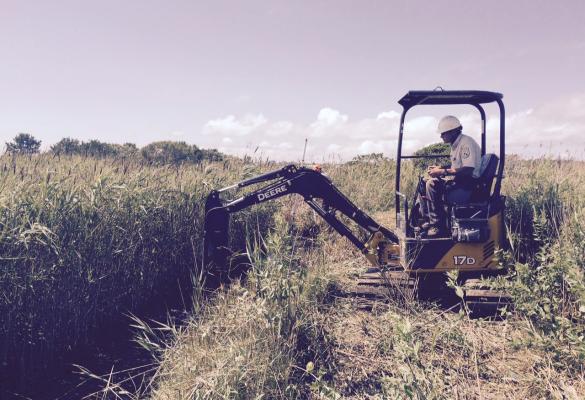Assisted Marsh Migration
Assisted marsh migration is a strategy of marsh conservation that works with the inland movement of coastal marshes as a response to rising sea levels. Within a marsh, the plants closer to the coastline are more frequently inundated with water and are thus more salt tolerant (Vanderveer 2023). However, sea level rise has resulted in both high and low tides moving further up the shoreline, flooding a greater percentage of the marsh. In response to this, marsh plants begin to naturally move into upland zones, seeking conditions that best match their desired salinity and water exposure (LCCN n.d.). Barriers such as seawalls, roads, canals, and homes can prevent marsh from migrating inland, resulting in loss of marsh habitat with sea level rise. Assisted marsh migration often consists of creating marsh migration corridors, moving infrastructure, removing invasive species, transplanting plants, and digging runnels (Bergeson 2023, Vanderveer 2023).

Case Studies
Island Road Marsh Creation & Nourishment
Maryland Analyzes Coastal Wetlands Susceptibility to Climate Change
Narrow River Restoration Project
Saving Tidal Marshes in the San Francisco Bay
Southwest Florida Assesses Salt Marsh Vulnerability to Sea Level Rise
Likely Benefits and Outcomes
This strategy is likely to achieve these project goals. Click to search for strategies with a similar benefit.
Related Green (natured-based) vs. Gray infrastructure
In development.
